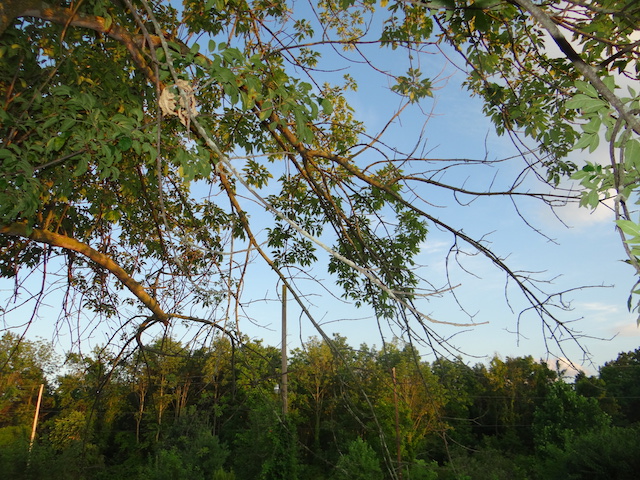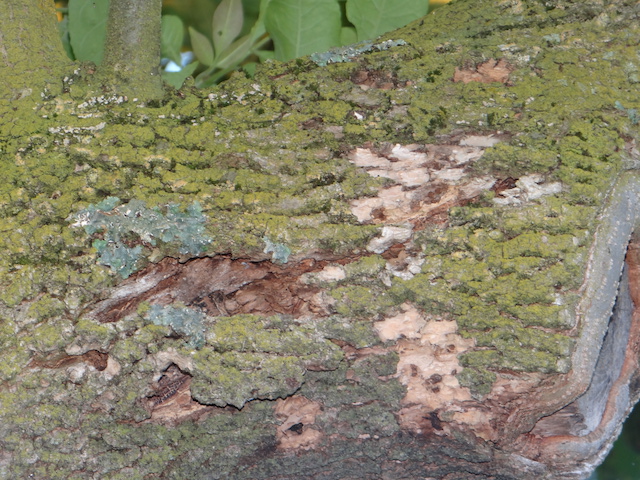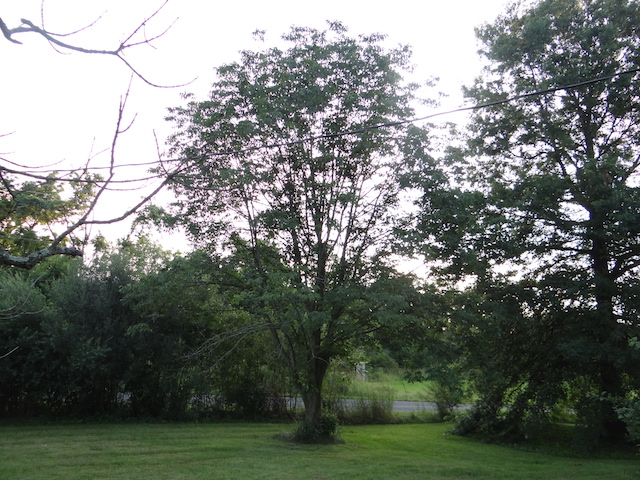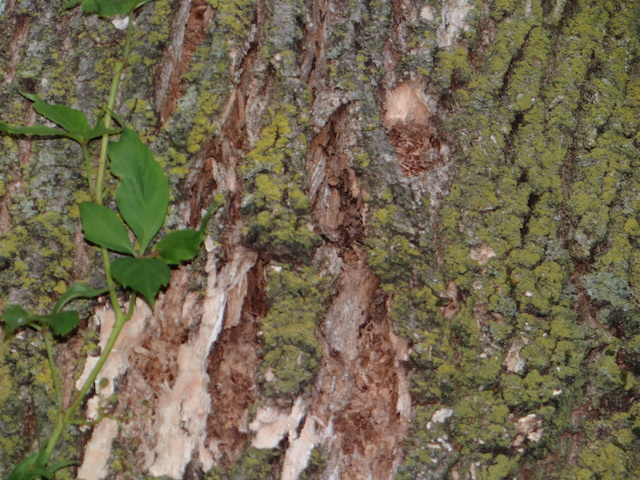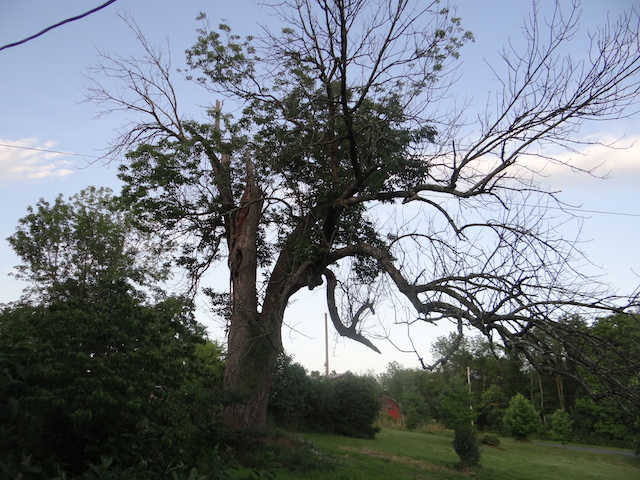A few years ago the entomological scientists in Pennsylvania asked if they could hang some traps in one of my ash trees near the road. They were tracking the incursion of one of our more dreaded recent insect invaders, the Emerald Ash Borer (EAB). This horrendously destructive insect, native to northeast China, Korea and Japan was first “discovered” in 2002 in Michigan but likely arrived in packaging or crating material around 1997. It has since spread into 18 states including Maryland. So far, we are speaking of the wholesale eradication of 16 species of native ash in the US and 8 billion trees. The change to our ecosystems and those species reliant on ash will be incredible.
In China, the EAB only attacks stressed and dying ash trees so is not considered a pest. But here in North America, it will feed on any type of ash tree–even healthy trees. It lays eggs beneath the bark and the larvae feed on the cambium, eventually girding and killing the entire tree within 3 to 4 years.The adult beetles fly from one ash tree to another spreading the infestation. Ash trees show no symptoms at first , but by the time the tree is declining, three to four generation beetles have emerged and have been off to do more damage. Close to 100% of the infested trees die and in populated areas will become expensive safety hazards.
No, borers were found at the time of the EAB test, but this year after asking my son to remove a dead low hanging branch, I began to notice that two of my younger ash trees were looking rather sparse and upon closer examination I found the dreaded signs of the ash borer’s presence.
This was the tree that had the EAB traps:
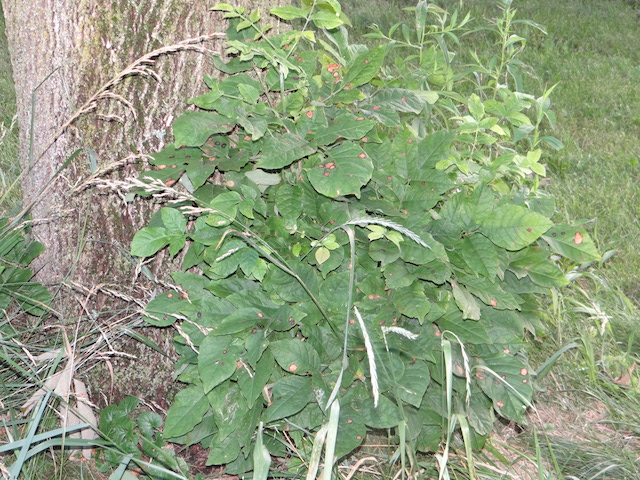
This is a tell-tale symptom called “epicormic growth” where the tree sends out a spray of branchlets from the trunk.
Trees with greater than 50% canopy thinning should be removed and destroyed in accordance with established guidelines.Research also has demonstrated that soil applications of imidacloprid-containing homeowner products provide excellent EAB protection for ash trees that are less than about 47 inches in circumference [i.e., 15 inches in diameter at breast height (DBH)].Note that Imadaclprid, a neonicotinoid, is the active ingredient in the insect drenches available to homeowners. Not available-soil drenches tiny, highly specialized wasps that lay eggs on immature stages of a host insect.
Initially, when EAB was found in other surrounding counties,there were public service announcements about not transporting firewood due to the potential spread of the insects hidden beneath bark, making new satellite sites of infestation. That hasn’t prevented the spread, though it may have slowed things. So far, the main options seem to be preemptively removing the ash trees (overall costs in the $ millions), spraying the bark, using a cover spray, injecting the trunk or treating the soil with various chemicals. Trunk injections work for 2 years but costs mount according to the size of the tree. Soil drenches work for one year. Biological controls, such as releasing parasitoids are also being tried but will take time to build a population have an effect, probably slower than the spread of the EAB.
The main attitude seems to be that saving some ash trees in urban areas makes the most sense since they are perceived as part of the community structure, can be cared for by professionals and may be included under protective actions legally. So, some ash will be spared and others will be replaced by different tree species. Something similar happened with the remaining elm trees in special locations.
Be on the lookout for EAB damage on your ash trees or for the presence of this bright green beetle.
This is my ancient ash “Wogan” which sustained lightening damage BUT has been dying of old age for decades, not from EAB.

